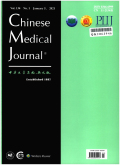摘要Background:Visual-spatial neglect (VSN) is a neuropsychological syndrome,and right-hemisphere stroke is the most common cause.The pathogenetic mechanism of VSN remains unclear.This study aimed to investigate the behavioral and event-related potential (ERP) changes in patients with or without VSN after right-hemisphere stroke.Methods:Eleven patients with VSN with right-hemisphere stroke (VSN group) and 11 patients with non-VSN with right-hemisphere stroke (non-VSN group) were recruited along with one control group of 11 age-and gender-matched healthy participants.The visual-spatial function was evaluated using behavioral tests,and ERP examinations were performed.Results:The response times in the VSN and non-VSN groups were both prolonged compared with those of normal controls (P < 0.001).In response to either valid or invalid cues in the left side,the accuracy in the VSN group was lower than that in the non-VSN group (P < 0.001),and the accuracy in the non-VSN group was lower than that in controls (P < 0.05).The P1 latency in the VSN group was significantly longer than that in the control group (F[2,30] =5.494,P =0.009),and the N1 amplitude in the VSN group was significantly lower than that in the control group (F[2,30] =4.343,P =0.022).When responding to right targets,the left-hemisphere P300 amplitude in the VSN group was significantly lower than that in the control group (F[2,30] =4.255,P =0.025).With either left or right stimuli,the bilateral-hemisphere P300 latencies in the VSN and non-VSN groups were both significantly prolonged (all P < 0.05),while the P300 latency did not differ significantly between the VSN and non-VSN groups (all P > 0.05).Conclusions:Visual-spatial attention function is impaired after right-hemisphere stroke,and clinicians should be aware of the subclinical VSN.Our findings provide neuroelectrophysiological evidence for the lateralization of VSN.
更多相关知识
- 浏览22
- 被引4
- 下载0


相似文献
- 中文期刊
- 外文期刊
- 学位论文
- 会议论文



 换一批
换一批 换一批
换一批



